Kyoto University Graduate School of Engineering
Department of Civil and Earth Resources Engineering
RESEARCH CONTENTRESEARCH CONTENT
Research Topics
1. Understanding the Multiscale Behavior of Geomaterials
Geomaterials include sand, clay, and rock, each exhibiting unique mechanical behavior under external forces. To construct more stable structures on or within the ground, it is essential to predict potential phenomena during the construction process and devise countermeasures if deformation occurs. Our laboratory conducts fundamental studies on the mechanical properties of geomaterials using experimental approaches such as triaxial compression tests, model experiments, and field measurements, combined with numerical simulations using methods like the finite element method (FEM) and discrete element method (DEM).
Additionally, soil is an aggregate of small particles of varying sizes and shapes, with voids filled with water and air, making it a multiphase material composed of solid (soil particles), liquid (water), and gas (air). The macroscopic properties of soil—such as strength, stiffness, permeability, compaction, and consolidation characteristics—are governed by the microscopic behavior of these three phases. In our lab, we apply X-ray micro-CT imaging to visualize the interior of soil samples and use numerical simulations (DEM) to interpret macroscopic mechanical phenomena from a microscopic perspective.
1-1. Investigating the Relationship Between Microscopic Structural Changes in Unsaturated Sand and Macroscopic Responses
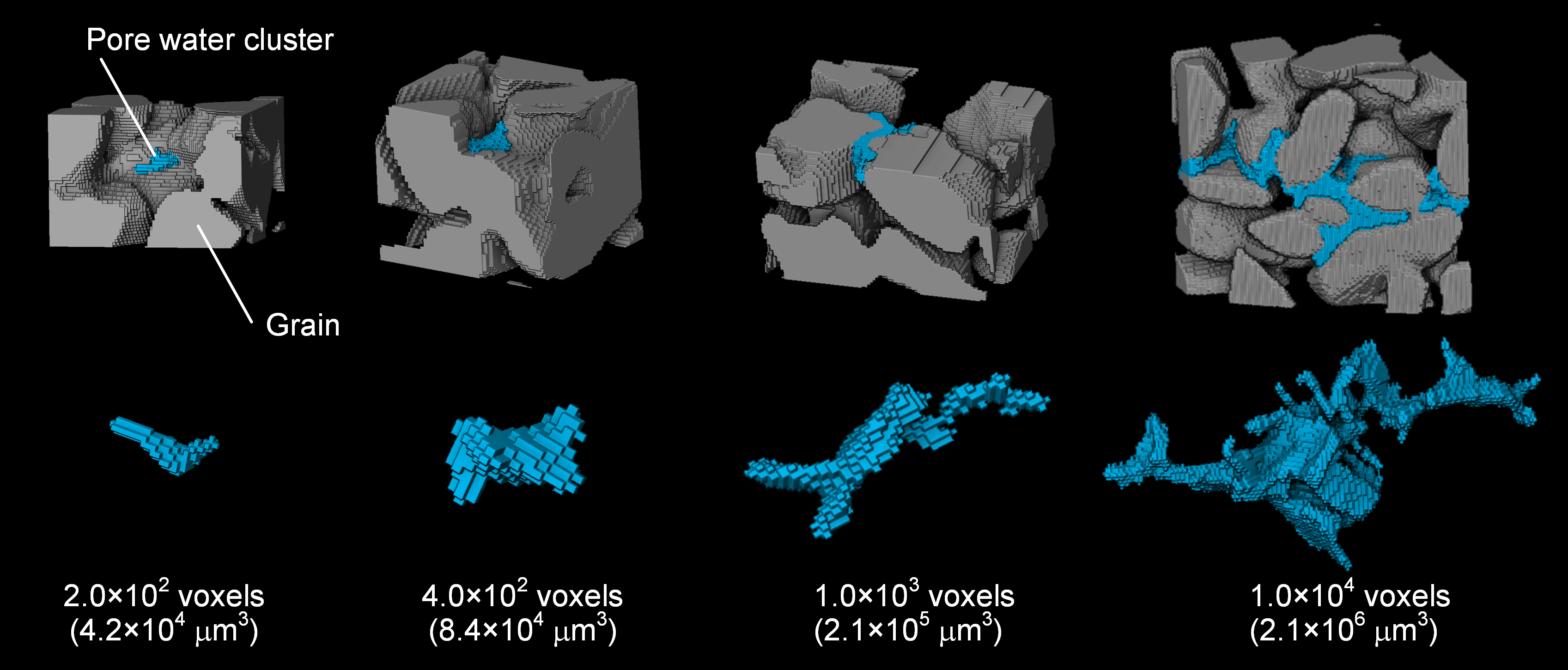
Visualization of pore water in various forms between soil particles (Kido et al., 2020)

Relationship between microscopic changes in pore water and macroscopic responses (Kido and Higo, 2020)
In unsaturated soils, water partially saturates the voids in soil, forming meniscus-shaped liquid bridges between soil particles due to surface tension and hydrophilicity, and bulk water in larger voids. These forms of pore water are influenced by suction forces, enhancing the effective stress of the soil particle skeleton and interparticle bonding forces. This study investigates how the forms and distribution of pore water change during drainage, absorption, and shear processes using X-ray micro-CT, and examines how these changes affect macroscopic mechanical properties.
Representative Papers
- Kido, R., and Higo, Y.: Microscopic characteristics of partially saturated dense sand and their link to macroscopic responses under triaxial compression conditions, Acta Geotechnica, Vol.15, pp.3055-3073, 2020. https://doi.org/10.1007/s11440-020-01049-w
- Kido, R., Higo, Y., Takamura, F., Morishita, R., Khaddour, G., and Salager, S.: Morphological transitions for pore water and pore air during drying and wetting processes in partially saturated sand, Acta Geotechnica, Vol.15, pp.1745-1761, 2020. https://doi.org/10.1007/s11440-020-00939-3
2. Development of Mechanical Simulation Techniques for Geomaterials
Numerical analysis is a powerful tool for understanding the mechanisms of mechanical phenomena in geomaterials and proposing practical technologies for safer infrastructure designs and disaster prevention. Our lab develops simulation techniques for a variety of issues, including ground-structure interactions, ground-fluid interactions, and the seismic behavior of rock slopes.
2-1. Advancing Methods for Discontinuous Rock Analysis

Seismic analysis of rock slope models using Discontinuous Deformation Analysis (DDA) with implicit friction law updating
Discontinuous rock deformation and the mechanical response under ground-structure interactions are strongly influenced by fractures within rocks and the friction characteristics at contact surfaces. Our lab has advanced numerical analysis techniques like DDA and Numerical Manifold Methods (NMM) to predict these interactions.
2-2. Development of Large Deformation Analysis Methods for Soil-Structure Interaction

Model experiments and reproductions of seismic behavior in stone masonry structures.

Model experiments and reproductions of soil excavation behavior using a bucket shovel.
2-3. Development of Large Deformation Analysis Methods for Soil-Fluid Interaction
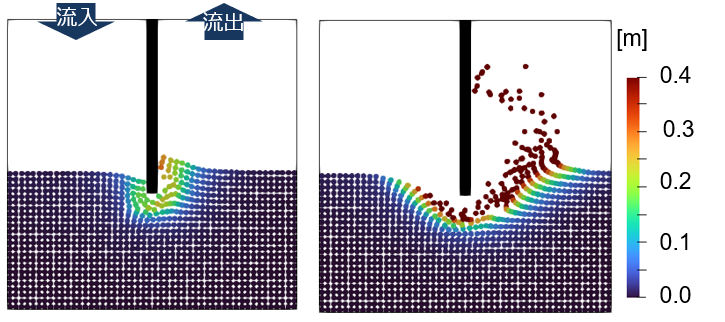
Analysis of soil liquefaction caused by quicksand.
3. Numerical modeling of fracturing in geomaterials
Assessment of material fracture is essential in engineering operations such as rock excavation, geological carbon sequestration, geothermal system operation, and hydraulic fracking. We develop innovative multi-physics computational methods to simulate and study the physics related to material fracturing, considering intricate interplays between fracturing and stress waves, fluid-solid interactions, and thermal conduction. High-performance parallel computing techniques are also applied for simulations, accompanied by the development of software for computer-aided engineering. For more information on this topic and potential research opportunities, contact Assoc. Prof. Fan Zhu.
3-1. Peridynamic approach for modeling hydraulic fracturing
We develop a novel approach based on the non-local, particle-based peridynamic method for simulating hydraulic fracturing in solids. The approach features coupling between a semi-Lagrangian formulation and the total-Lagrangian formulation of peridynamics theory and simulates both fluid and solid explicitly. The method is further extended to model hydraulic fracturing in porous media with consideration of fluid leak-off and existing fractures. This work aims to offer a powerful way to study and predict fracturing in geomaterials under various engineering conditions.

|
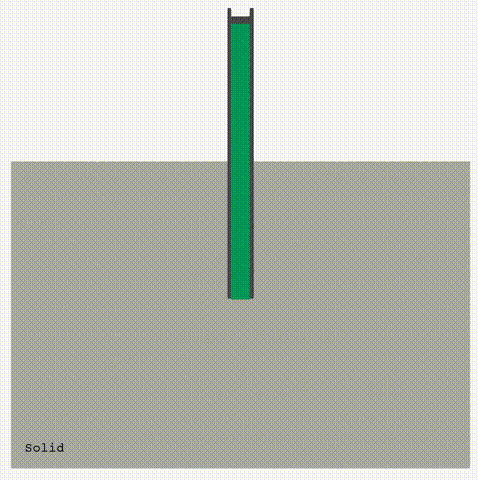
|

|
| Simulation of fluid-driven fracturing (left: hydraulic fracturing with fluid injection; right: major principal stress in solid during fracturing). | ||
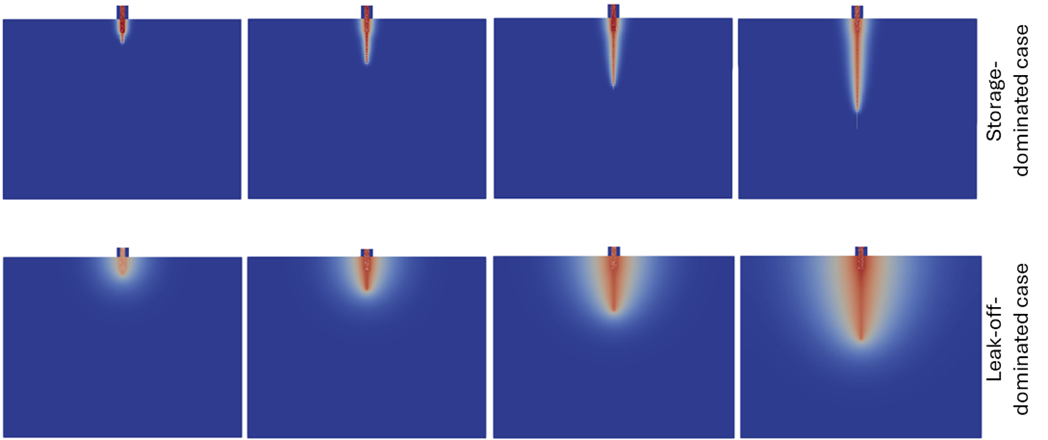
Peridynamic simulation of fluid injection induced fracturing in porous medium with leak-off (upper: scenario with small leak-off; lower: scenario with large leak-off). Fluid is injected from the top.
Representative Papers
- Yang, C., Zhu, F., & Zhao, J. (2024). A multi-horizon fully coupled thermo-mechanical peridynamics. Journal of the Mechanics and Physics of Solids, 191, 105758. https://doi.org/10.1016/j.jmps.2024.105758
3-2.Modeling blasting-induced rock fractures
Modeling blasting-induced rock fractures has long been challenging owning to the extreme pressure and the intricate interactions between the explosives and the rock. We employ the non-ordinary state-based peridynamics theory and develop a novel approach for simulation of rock fractures under blasting load. The approach enables consideration of the pressure dependency, strain rate effect, and visco-plasticity of the solid. The detonation process is simulated via the Jones-Wilkins-Lee equation of state in conjunction with a semi-Lagrangian peridynamics theory. Refer to the paper below for more details of our work.
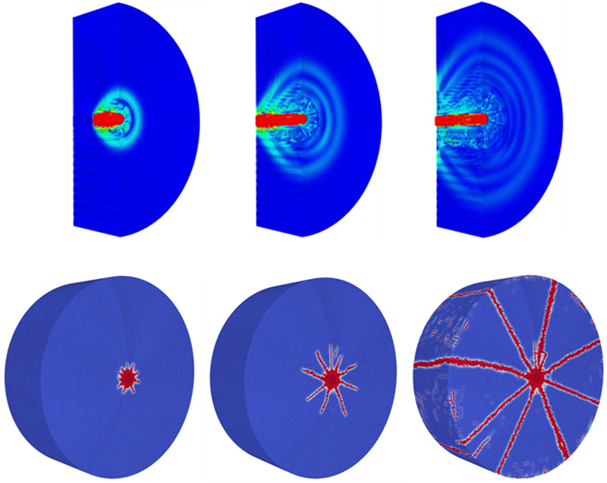
Simulation of blasting induced wave propagation (upper) and fracture of rock (lower) by peridynamics theory.
Representative Papers
- Zhu, F., & Zhao, J. (2021). Peridynamic modelling of blasting induced rock fractures. Journal of the Mechanics and Physics of Solids, 153, 104469. https://doi.org/10.1016/j.jmps.2021.104469
4. Stability Evaluation of Historical Masonry Structures by Geomechanical Approaches
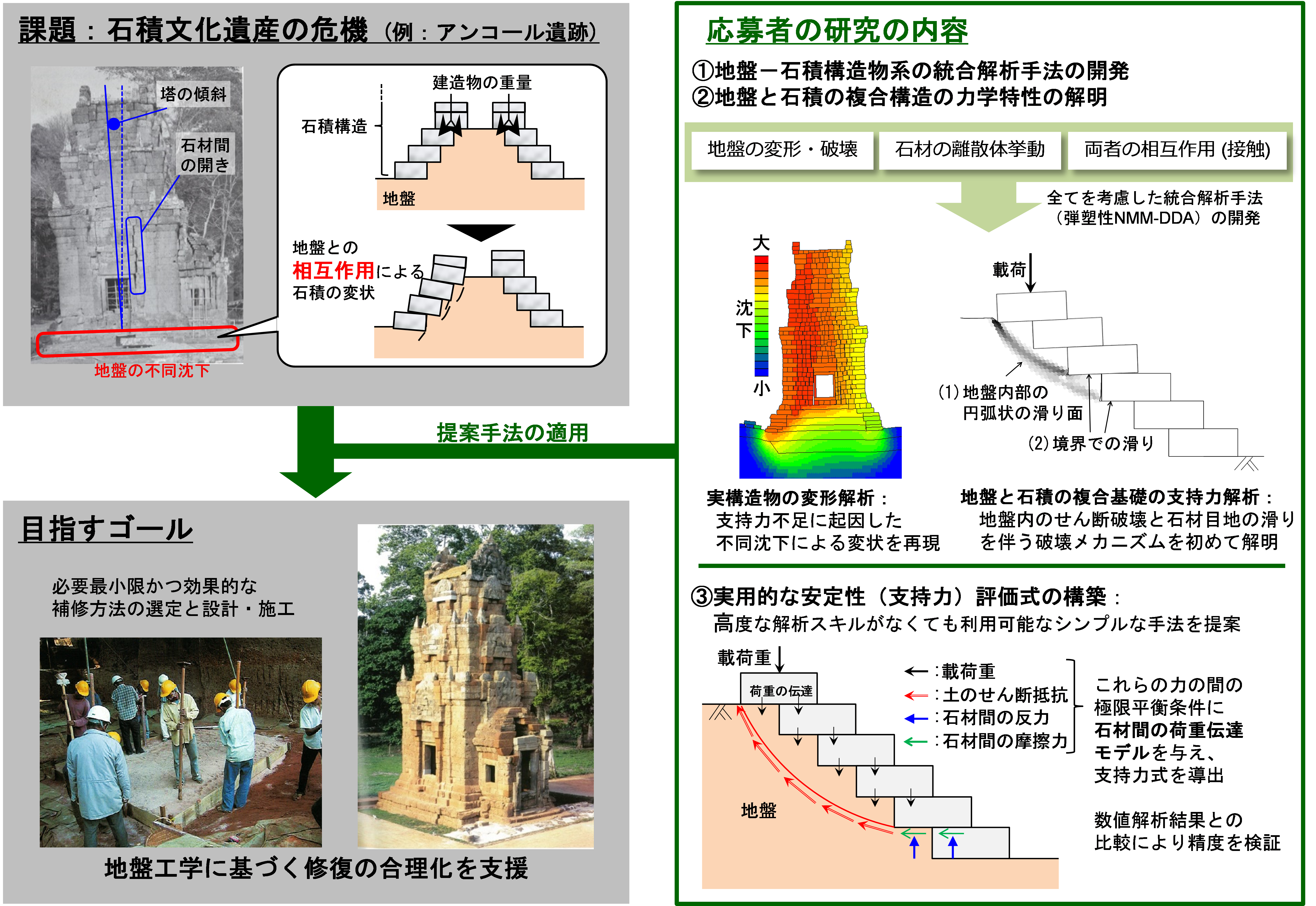
Development of stability evaluation methods for the Angkor ruins (Cambodia).
Our laboratory applies advanced numerical analysis techniques for discontinuous systems to study the destabilization mechanisms of cultural heritage masonry structures and to develop stability evaluation methods. One target of this research is the UNESCO World Heritage site of Angkor in Cambodia, where many structures face the risk of collapse due to foundation settlement. By treating these structures as composite systems of soil and masonry, we are conducting research on the following:
- Developing integrated mechanical analysis methods for soil-masonry composite systems.
- Elucidating the mechanical properties of the soil and masonry composite structures.
- Establishing practical stability (bearing capacity) evaluation formulas.
Kyoto Univ. Prof. Higo Lab.
Kyoto University
Geomechanics Laboratory
(Prof. Higo's Lab.)
Building 1, C cluster, Kyoto University Katsura Campus, Nishikyo-ku, Kyoto,
615-8540, Japan
Room 235(Prof. Higo)
Room 236(Assoc. Prof. Hashimoto)
Room 291(Assoc. Prof. Zhu)
Room 234(Asst. Prof. Lu)
Room 238(Students)